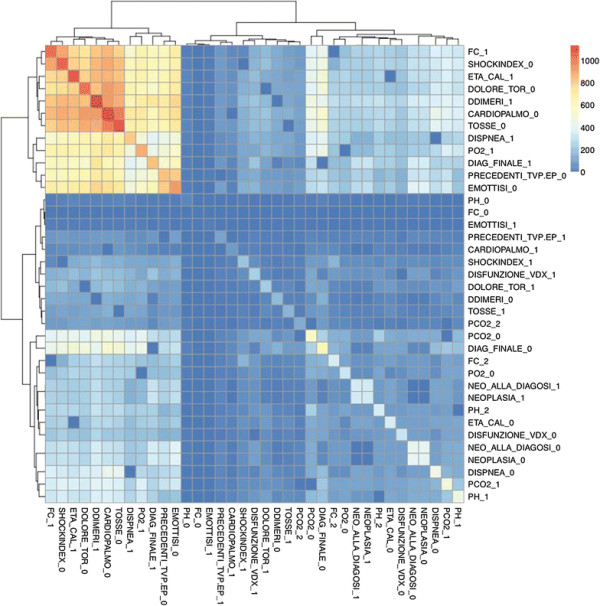Neural hypernetwork approach for pulmonary embolism diagnosis
October 30, 2015 • Publication

Clustering of the shared face matrix of the pulmonary embolism variables Rucco et al. BMC Research Notes 2015 8:617 doi:10.1186/s13104-015-1554-5
Following a collaboration between Topdrim members from the Camerino University and The Open University, the paper Neural hypernetwork approach for pulmonary embolism diagnosis by Rucco, Sousa-Rodrigues, Merelli, Johnson, Falsetti, Nitti and Salvi was recently published in BMC Research Notes.
The method constructs a Neural Hypernetwork to identify the patients with pulmonary embolism and presents the advantage of not using invasive clinical parameters obtained by imaging techniques still yielding better results that previous similar approaches.
Abstract
Background
Hypernetworks are based on topological simplicial complexes and generalize the concept of two-body relation to many-body relation. Furthermore, Hypernetworks provide a significant generalization of network theory, enabling the integration of relational structure, logic and analytic dynamics. A pulmonary embolism is a blockage of the main artery of the lung or one of its branches, frequently fatal.
Results
Our study uses data on 28 diagnostic features of 1427 people considered to be at risk of pulmonary embolism enrolled in the Department of Internal and Subintensive Medicine of an Italian National Hospital “Ospedali Riuniti di Ancona”. Patients arrived in the department after a first screening executed by the emergency room. The resulting neural hypernetwork correctly recognized 94 % of those developing pulmonary embolism. This is better than previous results obtained with other methods (statistical selection of features, partial least squares regression, topological data analysis in a metric space).
Conclusion
In this work we successfully derived a new integrative approach for the analysis of partial and incomplete datasets that is based on Q-analysis with machine learning. The new approach, called Neural Hypernetwork, has been applied to a case study of pulmonary embolism diagnosis. The novelty of this method is that it does not use clinical parameters extracted by imaging analysis.
The paper was published in BMC Research Notes under Open Access and the full paper is available in PDF from the Topdrim Website.

